Anaheim Ducks: The 7 Best and Worst Deals of the Bob Murray Era

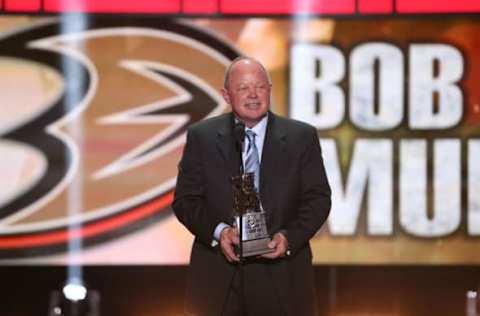
Bob Murray has made a lot of deals during his tenure as the Anaheim Ducks General Manager. Some of them have worked out, others have not. Today we are taking a look at the seven best and worst deals that have defined the Bob Murray era.
The title of General Manager is a prestigious one in the world of hockey. There are only 31 of them in the NHL at any given time, and because of that, it’s a class of highly respected folks. General Manager of the Anaheim Ducks, Bob Murray, knows better than most that it’s not an easy job by any stretch.
The General Manager is in charge of composing a cohesive roster, employing a head coach who elevates that roster, and maintaining a prospect pool that’s constantly infusing talent into not only their major league team but also enough to appease their minor league affiliates.
Bob Murray is the Anaheim Ducks current general manager and has been since 2008. He was originally hired as a scouting consultant for the Ducks in 1999 before moving to the role of professional scout for the Vancouver Canucks that same year.
In 2005 he transitioned into the role of Vice President of Hockey Operations for the Anaheim Ducks organization, working as Brian Burke’s right-hand man and specializing in player development. Once Brian Burke left the Ducks to be the President and GM of the Toronto Maple Leafs, Murray took over Brian Burke’s position making him the sole general manager to the Ducks franchise.
The job of GM is scrutinized quite a bit and a lot of moves they make are remembered as huge wins, huge losses, or they’re forgotten altogether. So with that said, I took on the task of looking at each of Bob Murray’s trades, free agent signings, draft picks and other personnel choices over the past decade and compiled a list of the best and the worst.
On my journey, I stumbled across 14 moves that have served to define his career in Anaheim over the past ten years. Seven of them are his best moves, and seven are his worst. This list included deals that were made with a clear vision in mind.
I have not included deals that are massively successful in hindsight because they drafted better than the other team. Nor will I put a ton of weight into what other teams acquired with the draft pick in question as draft picks are largely unpredictable. Due to their unpredictable nature, they aren’t always a sign of greatness or ineptitude by a GM.
So, with that being said, let’s get some of those out of the way and give them their due or criticism in some honorable mentions.
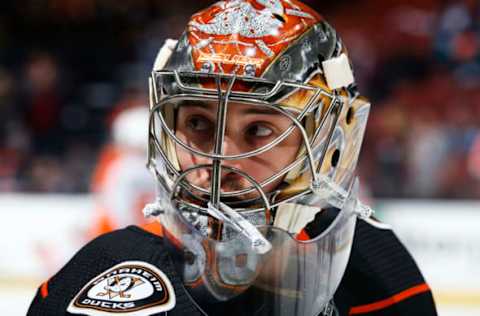
Honorable Mentions
These are the trades Bob Murray has made over the past decade that didn’t make the list. However, they are certainly still worth mentioning.
GOOD: TRADE WITH THE TORONTO MAPLE LEAFS, 2011 ENTRY DRAFT
This is one of the Anaheim Ducks most impressive trades in hindsight, essentially becoming Tyler Biggs for Rickard Rakell and John Gibson. However, the only reason this trade happened is due to the fact that Ottawa selected Stefan Noesen in the first round.
In a way, it kind of takes the shine away a bit when you consider the details surrounding the trade and look away from the ultimate results a bit. Nobody thought this deal would be this one-sided seven years later.
BAD: SIGNING CLAYTON STONER TO 4 YEAR 13 MILLION DOLLAR DEAL
Don’t get me wrong, Clayton Stoner wasn’t terrible. He was a serviceable defenseman who filled a role that the Anaheim Ducks needed. So, why is this bad?
Well, to put it bluntly, he was severely overpaid. He is a 3rd pairing defenseman who was signed with the intention of slotting into the top 4. Stoner never reached that height and was often injured, making moving him and his contract impossible. However, we’ll discuss that a bit later.
GOOD: TRADE WITH THE OTTAWA SENATORS, JULY 5TH 2013
This deal, in hindsight, is another good one on Bob Murray’s part. Bobby Ryan was a dynamic 4 time 30 goal scorer and he had one year remaining on his contract. The word on the street was that he was looking for a big pay-day. He had also been the subject of trade rumors for quite some time.
Bob Murray moved him in what is still one of the biggest deals in his entire tenure as GM. In return, he got promising prospects Jakob Silfverberg and Stefan Noesen. Noesen didn’t exactly work out and Silfverberg has been consistent, just not consistently great.
The thing that pushes this in Anaheim’s favor is the first round pick which turned out to be a top 10 pick. Yes, it was spent on Nick Ritchie who hasn’t exactly set the world on fire; although, recently he has shown a few sparks.
It’s worth noting that after the trade, Bobby Ryan has never scored 30 goals again, has only hit 50 points twice in 5 years, and is on what is considered one of the worst contracts in the league.
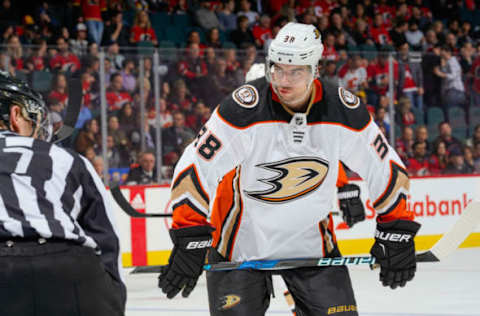
GOOD: SIGNING HIS CORE TO GOOD CONTRACTS
Bob Murray has done an admirable job of locking up his players to value contracts. Ryan Getzlaf was and still is a great contract. John Gibson’s contract extension is shaping up to be a steal.
Hampus Lindholm and Rickard Rakell are both signed to incredibly team-friendly contracts, and the young players like Ondrej Kase and Nick Ritchie are on good bridge deals.
BAD: HIS OTHER SIGNINGS, NAMELY FREE AGENTS
Bob Murray has earned the nickname “Bargain Bin Bob” from me. This is not only due to the frugal signings of his core pieces but also because he loves seemingly dig deep into the “lost and found bin” to try and rebuild players from the “land of misfit toys”.
Dany Heatley, Bryan Allen, Mason Raymond, Chris Kelly, Rene Bourque, Jason Chimera, Luke Schenn come to mind as players who really didn’t need to be on the Anaheim Ducks roster. Nevertheless, Murray signed them to mostly low-risk contracts or acquired them for really cheap to try and find a steal.
It has become tiresome, and for every success story like Chris Stewart and Derek Grant, there’s several who faded to obscurity shortly after being on the roster.
BAD: THE 2016 and 2018 TRADE DEADLINES
Incoming Pieces
2016- Corey Tropp, Martin Gernat, Jamie McGinn, Brandon Pirri
2018– Chris Kelly, Jason Chimera
Outgoing Pieces
2016- 2nd Round Pick, Patrick Maroon, Tim Jackman
2018- Chris Wagner
Now, neither of these trade deadlines are awful on paper. However, when you consider that only one player that was acquired played more than 20 games, 28 including playoffs for Jamie McGinn, and none of them were retained past the first season they were acquired, aside from AHL player Corey Tropp, it’s quite jarring.
McGinn would have been a solid signing for the Anaheim Ducks. Pirri would also have been a decent signing since he signed for such a cheap contract in free agency. Conversely, 2nd round picks are not exactly cheap, and Patrick Maroon and Chris Wagner are at least NHL caliber players. The Ducks traded decent depth pieces, for rentals, and not overly great ones.
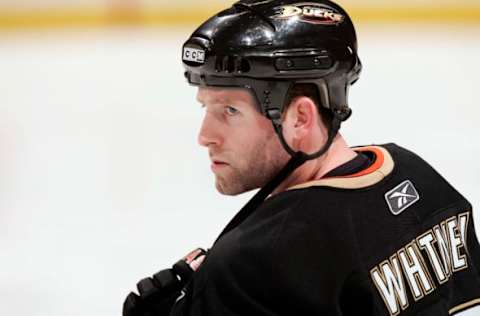
NUMBER 7: A Bust and a Boom
Now, first let me say that Bob Murray has a relatively modest list of moves. He doesn’t make huge game-changing moves every season. The ones he does make, more times than not, are not exactly flashy. This list doesn’t have many clear-cut robberies for or against the Anaheim Ducks. However, that doesn’t mean they didn’t end up in our favor or against us.
BAD: TRADE WITH THE PITTSBURGH PENGUINS, FEBRUARY 26th, 2009
Ryan Whitney was a promising defenseman. He was just entering his prime, he was dynamic offensively, and he also had a 59 point season under his belt. Nothing to scoff at, Chris Kunitz was older at 28. He wasn’t exactly a player you build around, but he was solid. Kunitz posted back to back 50 point seasons before being traded and had 35 points in 62 games the season of his trade.
I don’t fault Murray for trying to go younger and acquire a young defenseman like Ryan Whitney. However, at the same time, Whitney was coming off of a pretty severe injury that required surgery on his foot. It was the type of injury that some players never look the same after and Ryan Whitney was one of those players.
Putting up 23 points in 48 games the season of the trade, he’d never put up more than 28 points again in any season during his career. Meanwhile, Kunitz went on to win 3 more Stanley Cups, bringing his total to 4. He put up 40 points or more in 6 consecutive seasons for the Penguins. This included a staggering 52 points in 48 games during the lockout season.
Eric Tangradi didn’t amount to much outside of being a solid AHL player. Overall, this was a high-risk move and it’s one that did not pay off for the Anaheim Ducks.
GOOD: TRADE WITH SAN JOSE SHARKS, MARCH 4th, 2009
This is not a home-run move, but one that worked out pretty well for Anaheim. Travis Moen was a solid player for the Ducks, playing a key role on the infamous shutdown line in the 2007 Stanley Cup run. He was not exactly an offensive juggernaut, posting a career-high of 21 points during that 2007 run. He was a good depth player but not one who’s irreplaceable.
Kent Huskins was a decent 3rd pairing defenseman, also a part of the 2007 Stanley Cup team for the Ducks. He was 28 at the time of the trade and had played over 50 games a season at the NHL level only once prior to being traded.
The Ducks in return got prospect Timo Pielmeier who never really panned out, playing one NHL game total, a mid-round draft pick, and Nick Bonino. Bonino was a great player for the Anaheim Ducks, spending 5 seasons with the team, posting an impressive 49 points in 2013 when he was 25-years-old.
Meanwhile, Moen played one season with the Sharks and Huskins lasted 2 seasons. Bonino became a dependable 3rd line center who was potent on the powerplay. The Anaheim Ducks didn’t exactly strike gold with Bonino, but they didn’t exactly give up much to get a solid player who contributed to a Ducks team that wasn’t exactly flush with young, impact forwards.
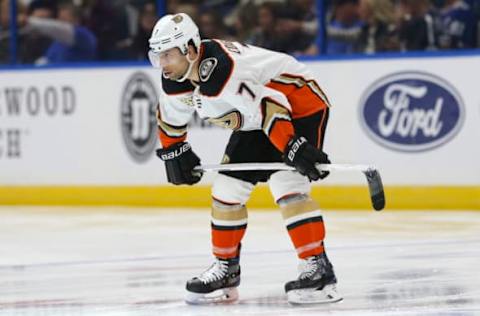
NUMBER 6: Overpaying a Vet and Stealing Ironman
BAD: TRADE WITH THE DALLAS STARS, FEBRUARY 24th, 2017
Let me get this out of the way, as I feel I have to every time I mention Patrick Eaves in a negative light. He has nothing to do with why this move is considered bad. He is a great person by every account I’ve ever heard, he’s a great player, and he’s an inspiration to even be skating let alone playing in the NHL after such a debilitating injury.
That doesn’t mean the trade that led to him coming to the Ducks isn’t off-limits to scrutiny. Patrick Eaves has a hard time staying healthy. He, prior to the season he was traded, had not played in 50 or more games in 5 years. He was over 30 years old when the Anaheim Ducks acquired him, and he was having a season with numbers that were not exactly sustainable.
The blame on this one comes strictly to Murray. He somehow expected someone who had a history of injuries to remain healthy at an age when players who don’t have a long history of injuries begin to regress.
My other major gripe with this deal was the price. Murray gave up a premium, paying a 2nd round pick, which became a 1st round pick for Eaves about a week before the trade deadline in hopes of beating the bidding war and the inflated prices that happened around trade deadline time. It was the same trap that Minnesota and Toronto fell into trading for Martin Hanzal and Brian Boyle.
Come deadline day, players were going for pennies on the dollar. Jarome Iginla went for a conditional 4th round pick, Thomas Vanek went for a struggling prospect and a 3rd round pick, PA Parenteau went for a 6th round pick, Drew Stafford went for a 6th round pick. The Ducks paid a premium, and it kind of came back to bite them.
GOOD: TRADE WITH EDMONTON OILERS, JULY 12th, 2011
In 2011, the Edmonton Oilers were rebuilding. For some reason, they thought it would be wise to trade a 24-year-old who had 30 points in three of his four seasons and had never missed a game since signing with them. Bold strategy Cotton, let’s see if it pays off for him. Spoiler: It didn’t.
Andrew Cogliano has been a great player for the Ducks since that trade, playing a staggering 866 out of 868 possible regular season games, and 64 out of 64 possible playoff games. The only two games he’s missed were due to a pretty petty suspension that seemed to be far more of a statement than a valid decision.
Cogliano has consistently been reliable for 30 points or so and has been one of the best penalty killers in the league. This is a trade that really had no downside for the Anaheim Ducks. I know I said I wouldn’t be including much of the draft picks, but it is worth noting that the draft pick sent was for two seasons after the trade was made.
The draft ended up being incredibly shallow, and the player selected by the Oilers, Marc-Olivier Roy, has yet to play an NHL game. He also has not found success even at the AHL level, achieving only moderate success in the ECHL.
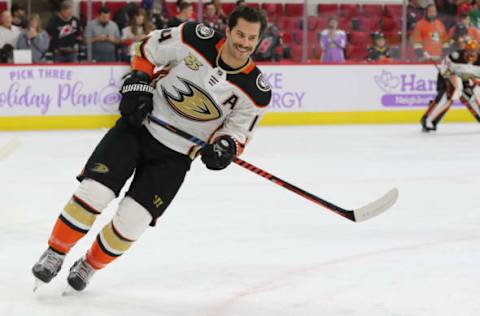
NUMBER 5: Deals with the Devils
BAD: TRADE WITH THE NEW JERSEY DEVILS, JUNE 26th, 2015
Kyle Palmieri was simply put not living up to expectations for the Anaheim Ducks, he showed signs of brilliance but seemed incapable of taking the next step to becoming a true game changer. Palmieri’s style of play also seemed to clash a bit with the style of play the Ducks were known for, often making it difficult to find a place for him in the lineup.
Following the 2014-15 season, the Ducks decided it was time to shake things up a bit and sent the native “New Jerseyan” home. In return, the Ducks received a 2nd round pick which was flipped in addition to other pieces for Carl Hagelin, who didn’t work out. Hagelin was traded half a season later. They also received a 3rd round pick which was flipped for just over 20 games of Jamie McGinn.
The Anaheim Ducks, simply put, got nothing of value for the high skill winger who went on to have seasons with 30 goals, 26 goals, and 24 goals with the Devils. I do maintain a stance that Palmieri would never reach the level of success he had with the Devils with the Ducks. He just didn’t seem to thrive in the more physical Western Conference, finding more success in the higher speed of the Eastern Conference.
Murray didn’t exactly do a great job of getting value for him. I actually was at the draft in Sunrise when this trade happened and was kind of underwhelmed, to say the least, and I still feel that way 3 years later.
GOOD: TRADE WITH THE NEW JERSEY DEVILS NOVEMBER 30th 2017
The Ducks started the 2017 season ravaged by injuries. They relied on “elite number 1 center”, Derek Grant, to save the day, and it just wasn’t working. The Ducks found themselves near the bottom of the standings and in desperate need of some backup.
The one thing the Anaheim Ducks had a good amount of was defensemen, with a young core of Hampus Lindholm, Cam Fowler, Josh Manson and the emergence of Brandon Montour. The Ducks felt that Sami Vatanen was the most replaceable guy, and on November 30th Murray made the move to send Vatanen to the Devils for veteran center Adam Henrique.
Henrique is not the flashiest player, he’s not going to put up 70 points a season, and he’s not capable of taking over a game the way that a Ryan Getzlaf can, but he’s reliable. He’s responsible defensively and he’s loyal. These are three qualities that Bob Murray loves. Henrique has gelled well with the Ducks to this point.
Most nights he finds himself nicely planted into a top 6 role, taking 2nd line center duties and finding some real chemistry with quite a few of the Ducks players. The Ducks were able to re-sign the Brantford, Ontario native to a 5-year deal that makes him the Duck with the 3rd most term left, behind only Cam Fowler and John Gibson.
Joseph Blandisi isn’t a blue-chip prospect but he is a good AHL player who can play some NHL hockey when needed. Vatanen has found a good home with the Devils and overall this trade is one that’s worked out well for both teams… Unlike the last time the Devils made a trade involving a right-handed defenseman with a Pacific Division team. (Sorry Oilers Fans, gotta take that shot any chance I get!)
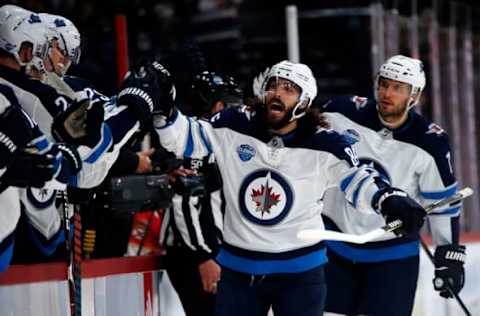
NUMBER 4: Giving Away Value and Correcting a Mistake
BAD: LETTING MATHIEU PERREAULT WALK
I still, to this day, 4 years later, do not understand this move one bit. The Anaheim Ducks had a talented forward, in the prime of his career, coming off of a season which saw him put up 43 points in 69 games, and as a restricted free agent you don’t even qualify him.
This just continues to baffle me. Every time I see his name I just grow more and more confused. The only explanation I’ve ever found is that the Ducks felt they were set at center with Getzlaf, Kesler and… Nate Thompson?!
The same Nate Thompson, who when you combine his two best offensive seasons, you get the same amount of points that Mathieu Perreault had in his very first season as a Duck. I’ve also heard that we had Rickard Rakell ready to go, and yeah, that’s worked out great and all, but, it’s not like Rakell isn’t a prime example of the willingness to move a center to the wing.
Overall, the Ducks didn’t even qualify an offer for a guy who has put up 39 points or more in 5 straight seasons (4 of those having 40+ points). Letting him walk away for free, not even qualifying him an offer and trading his rights for picks, or waiting for an offer sheet. Just letting him walk away, leaving the Ducks with nothing.
I just can’t wrap my head around the thought process with this one when that same season you let him walk, you played Rene Bourque, Emerson Etem, Tim Jackman and Devante Smith-Pelly on your roster.
GOOD: TRADE WITH THE EDMONTON OILERS MARCH 3rd, 2010
We’ve already discussed Ryan Whitney. The only positive of that trade was that the Anaheim Ducks were able to get something of value back for him before he completely nosedived in value. The Ducks got highly-skilled veteran defenseman Lubomir Visnovsky back, and while his tenure with the Ducks was relatively short at only 2 full seasons and part of another season, he had quite a resurgence.
Putting up 68 points in his first full season as a Duck, he only managed 27 points in his follow-up performance. The Ducks then traded him to the Islanders for a 2nd round pick, which was followed by quite a bit of controversy, and the eventual regression of Visnovsky. He never reached the point totals he did as a Duck in Long Island.
However, the one great season, paired with being able to recoup some assets from Ryan Whitney, and recoup some assets from Visnovsky before his play deteriorated, is quite a good deal in my books.
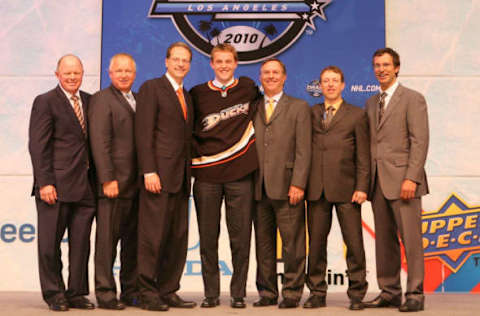
NUMBER 3: Bringing Him Back and Stealing Cam
BAD: RE-HIRING RANDY CARLYLE
The year is 2016, and the Anaheim Ducks were coming off of another game 7 loss. It was their fourth in a row. A change was needed and the casualty wasn’t a core roster member, it was the man behind the bench, Bruce Boudreau. A lot of fans felt this was a good move.
Boudreau’s message was seemingly falling on deaf ears, and the Ducks were clearly not matching up well against the best of the best in the West. They lost every time they were matched up with a team who was looked at as equal or superior in the playoffs under Boudreau’s watch. So who would they bring in to replace Boudreau?
The promising, although in hindsight not exactly great, Mike Yeo? The blue-chip prospect Travis Green? The wild cards Dale Hunter, Kirk Muller or Rick Bowness? Nope, instead, Bob Murray opted to bring back his friend, and former Ducks coach Randy Carlyle.
This deflated a lot of fans. Carlyle’s exit previously was ugly, it was the Ducks worst season in the past decade and one that saw fans calling for Ryan Getzlaf to be traded. The first season back under the control of Carlyle, the Ducks went far. They broke their Game 7 curse, they made it to the Western Conference finals, and could very well have won the series that ultimately ended in a loss to the Predators in 6 games.
However, they were without John Gibson and the defense was being held together with duct tape. But, “what ifs” are dangerous, and that season was the highlight of the comeback from Carlyle. The next season the Ducks were swept in the first round by the San Jose Sharks. It was another slow start this season that has had fans chanting for Carlyle to be fired. Some fans are even going further and asking for Murray to go with him.
Overall the Ducks record on paper isn’t exactly bad. They consistently pull out wins that they should have no business doing so. Yet, when you actually look deeper you find that the underlying numbers the Ducks are bad. They’re consistently outshot, a staple of a Carlyle team. They’re undisciplined, another staple of a Carlyle team. Veterans who are past their prime are frequently favored instead of younger, more promising players. Again, a staple of a Carlyle team.
Overall, the style of play that Carlyle has pushed is quickly becoming phased out of the league. Instead of hiring someone who could have helped squeeze some more out of the veterans, while incorporating a newer style that would work better in the long run, the Anaheim Ducks elected to go to the known commodity. I think that is a big mistake, and more than anything, a disservice to the veterans on this team who want one last chance at a cup.
GOOD: CAM FOWLER
This one is still baffling, but rather than being upset with Murray, this one causes me great joy. At the 2010 Draft, the Anaheim Ducks had the 12th overall pick and the 30th overall pick. With the 12th overall pick, they were looking at getting a promising prospect, someone like Brandon Gormley, Mark Pysyk, Derek Forbort or Jaden Schwartz were in the cards.
More than likely, the first three as the Ducks were looking for defense given the recently retired Scott Niedermayer. Neither Gormley, Pysyk or Forbort were seen as top-line defenders, but they were expected to be decent NHL players. The Ducks would likely be happy, although not over the moon in selecting one of them.
The draft began and for the first 4 picks things went as expected. Taylor Hall, Tyler Seguin, one of the big two defensemen in Erik Gudbranson, and Ryan Johansen all went. Fifth overall, the Islanders took Nino Niederreiter, not overly far off the board but a bit high with Brett Connolly there who was extremely highly touted at the time. They made the right choice in hindsight, and Connolly was taken next by the Tampa Bay Lightning.
Then, the first huge surprise as the Hurricanes took Jeff Skinner, not even ranked as a 1st round pick by central scouting. He was touted pretty highly but was more of a question mark than most ranked above him. The Hurricanes took him 7th overall, and it worked out well for them. Alexander Burmistrov and Mikael Granlund went next.
Curiously, Cam Fowler was still left on the board. He was considered a top 5 or even a top 3 pick by some and he was still sitting here 10th overall. The Rangers were up next and looking for a defenseman. Fowler was the obvious choice.
Then, the unthinkable happened. The Rangers went off the board, passing over Cam Fowler, and the next three highest-ranked defensemen in Brandon Gormley, Mark Pysyk, and Derek Forbort, and took Dylan McIlrath. McIlrath was looked at as a prospect from the past, a big physical defenseman who wasn’t the smoothest skater, more interested in impeding other’s path to the net than to get the puck out of the zone.
This explains why they passed on Fowler a bit if they wanted grit and physicality. Jack Campbell went 11th overall, considered a prize goaltending prospect. The Ducks chose 12th and they did what 11 teams ahead of them didn’t and selected the future all-star, Cam Fowler.
It’s quite crazy that Fowler fell this far, and it sent shockwaves. It’s still entirely unknown how he fell this far. The only explanation I’ve heard from anyone is rumors by fans who say there were questions about Fowler’s devotion to hockey as he was also quite successful at baseball.
I don’t buy it, but that’s the only explanation I’ve seen. Regardless the reason, the Ducks got a steal in Fowler who, at this point, is seen as the best, or at worst second best), defenseman in this draft. The Ducks got a truly talented defenseman they thought they had no chance at getting at the start of the draft. Yes, it was because of circumstances the Anaheim Ducks and Bob Murray didn’t control, but it was still a huge win for the Ducks and Murray’s resume.

NUMBER 2: Bringing Back “The Wiz” and Adding a Little “Love” to the Lineup
BAD: TRADE WITH THE COLUMBUS BLUE JACKETS MARCH 2ND 2015
This trade was just bad all around. William Karlsson was a solid prospect for the Anaheim Ducks, showing promise in the AHL and brief flashes of brilliance in the NHL. A 2nd round pick is valuable in the hands of Bob Murray and Rene Bourque was dead weight, that was acquired in another bad trade, by moving other dead weight, Bryan Allen. The Anaheim Ducks committed to the dead weight for another season as Rene Bourque had an additional season on his contract.
In return, the Ducks got James Wisniewski, who was injured at the time. He came to Anaheim and played 13 games and was seen as a complete failure. He was shipped out for Anton Khudobin who was a decent backup but was on a bad contract.
Wisniewski went on to play 43 seconds for the Hurricanes, tore his ACL, and hasn’t been seen in the NHL since, outside of a professional tryout with the Bolts.
The picks weren’t great, neither has panned out thus far. Bourque was somehow more valuable to the Blue Jackets than Wisniewski was. William Karlsson developed into quite a valuable NHL player, posting over 20 points in both of his full seasons with the Blue Jackets prior to having his coming out party on the Vegas Golden Knights during the Cinderella Run of their inaugural season.
GOOD: TRADE WITH THE PITTSBURGH PENGUINS FEBRUARY 6TH 2013
This is an example of a low-risk move that made Bob Murray look like a genius. Ben Lovejoy was a relatively unknown 28-year-old defenseman with under 100 games of NHL experience. Murray saw something in him and traded for him at the very low price of a pick where teams seemingly take whoever has the coolest name and hope for the best.
Ben Lovejoy didn’t turn out to be an all-star in the making or a game changer, but he was the perfect linemate for Cam Fowler and the one he arguably had the best chemistry with during his entire career thus far. He became a staple of the Anaheim Ducks lineup for the next two and a half seasons and was someone the Ducks depended on.
Murray added to that trade’s brilliance when following Lovejoy’s 2nd full season with the Ducks he traded Lovejoy back to the Penguins for Simon Despres, in a 1 for 1 trade. He turned out to be an upgrade over Lovejoy, who was younger and had similarly good chemistry with Fowler. Murray makes these moves almost every season, and they rarely ever work out as well as this one.
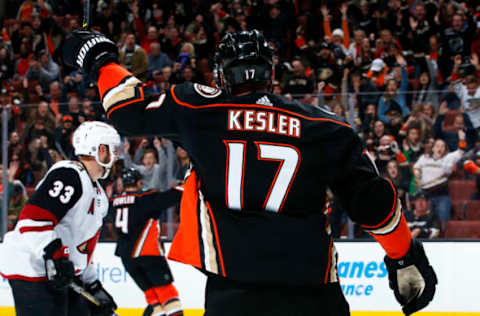
NUMBER 1: “Kesbae”
GOOD: TRADE WITH THE VANCOUVER CANUCKS, JUNE 27TH 2014
Ok, I know revealing the number one good deal is completely the opposite of how I’ve been writing the rest of this article. I’ve been starting with the bad and going with the good, but boy oh boy do I have a lot to talk about with the “Bad Number 1”. I want to get the good out of the way before diving down that rabbit hole.
Ryan Kesler had a falling out with the Canucks. He had a No Trade Clause and was only willing to move it for certain teams, and reportedly only wanted to play in California for one reason or another. The Anaheim Ducks were that lucky team who acquired the former Selke Trophy winner.
Kesler spent the next couple seasons with the Ducks as a premier shutdown center and one of their three cornerstone pieces during their cup window. In return, the Ducks gave up Nick Bonino, who we talked about earlier, a solid player. As a low-end 2nd line center, he only ended up spending one season in Vancouver before being traded to the Pittsburgh Penguins for Brandon Sutter.
Moving Luca Sbisa was seen by a lot of Ducks fans as a positive. The young D-man never took the next step in the NHL and has yet to find a home. He’s just not a very good NHL player. The 1st round pick ended up being Jared McCann who also was traded by Vancouver following… you guessed it, one season in Vancouver. Their 3rd round pick was eventually traded for Derek Dorsett.
The 3rd round pick acquired by the Ducks turned into Devin Sideroff who hasn’t panned out either, but that is fine. Overall, the Ducks acquired an All-Star caliber center, for 1 season of Nick Bonino, one season of Jared McCann, too many seasons of Luca Sbisa and some of Derek Dorsett. Kesler kind of forced Vancouver’s hand here, but boy oh boy is this trade completely one-sided in hindsight.
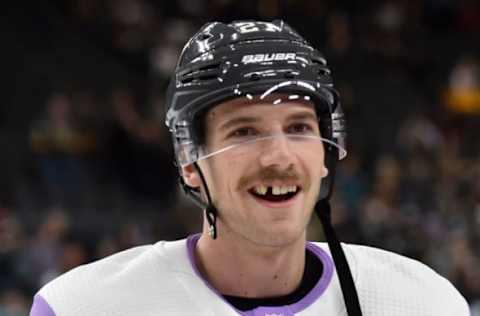
Number 1: Oh Boy…
BAD: THE ENTIRETY OF THE VEGAS EXPANSION DRAFT SITUATION
Here we are, the worst chain of decisions in Bob Murray’s tenure as the Anaheim Ducks general manager. Let’s set the stage.
The Vegas Golden Knights are being born. A brand new franchise in the NHL and they are set to get a team through an expansion draft. Every team in the NHL has two options: protect 7 forwards, 3 defensemen and 1 goalie or protect 8 skaters regardless of position and 1 goalie.
The kicker though, teams have to honor no movement clauses and are forced to use a protection slot on those players unless they ask them to waive it or buy them out. The Anaheim Ducks had quite a few players with no movement clauses including Ryan Getzlaf, Ryan Kesler and Corey Perry up front, with Kevin Bieksa on the back end.
That’s the first mistake. Bob Murray, after acquiring Kevin Bieksa, signed the 34-year-old to a 2- year contract extension with a full No Movement Clause. Bieksa was on the decline and began drawing the ire of Ducks fans almost immediately. Despite this, they had to use a protected slot on him.
For some reason, the Ducks didn’t bother asking Bieksa to waive the NMC nor did they try to buy him out. Which, in the long run, would not have really affected them on the cap or roster wise.
The season prior to the expansion draft we saw teams start to prepare their rosters for the expansion draft. Murray did not. Instead, electing to let his team play it out the season and deal with the fallout afterward.
This hurt the Ducks badly in the long run. Reason being, the Ducks had four defensemen they needed to protect, and only two slots to make it happen. Technically they had three, but they had to protect Kevin Bieksa which left them with only 2 slots.
They elected to protect Cam Fowler and Hampus Lindholm which was the right choice. Sami Vatanen and Josh Manson were the other two who needed to be protected. The general consensus among Ducks fans and analysts was that Bob Murray would trade Sami Vatanen prior to the expansion draft deadline, buy out or ask Kevin Bieksa to waive his No Movement Clause, and protect Cam Fowler, Hampus Lindholm, and Josh Manson.
This would leave Vegas very little to select from pertaining to the Ducks available list. Sami Vatanen was the odd-man out on the Ducks roster and the emergence of Brandon Montour, who didn’t meet the conditions to be required to be protected in the expansion draft to that point, on the blueline was enough to make Vatanen expendable.
If the Ducks bought out Bieksa they still had Clayton Stoner on the roster who would fill the same role, and cost the same roughly even with the buyout penalty for the Ducks.
Let’s say that the Ducks made the same trade they made a mere 4 months later and traded Vatanen for Henrique and Blandisi prior to the expansion draft. This is entirely plausible, the only difference in New Jersey’s list would be they likely would not have traded for Mirco Muller if they already had Sami Vatanen. That would leave the Ducks protected list looking like this:
Forwards: Ryan Getzlaf, Corey Perry, Ryan Kesler, Adam Henrique, Jakob Silfverberg, and Andrew Cogliano
Defense: Cam Fowler, Hampus Lindholm, and Josh Manson
Goaltenders: John Gibson
What would be exposed for the Ducks? Well, lets put it this way. The only players on the exposed list that have played a single game with the Ducks this season, a mere full season later, are Sam Carrick, and Patrick Eaves (who was unsigned at that point) Yes, the Ducks would have ultimately lost nothing if they had done things this way.
More from Ducks News
- Who could the Anaheim Ducks consider presenting offer sheets to?
- Is Pierre-Luc Dubois on the cards for the rebuilding Anaheim Ducks?
- Making the case for the Anaheim Ducks to trade with the Edmonton Oilers
- Anaheim Ducks might benefit tremendously by trading John Gibson
- How close are the Anaheim Ducks to becoming contenders again?
What did they do instead? Well, instead, Bob Murry made a trade agreement with George McPhee. This trade agreement made the Knights take over the one year remaining on Clayton Stoner’s contract.
The cost to do so? Oh, just Shea Theodore who was considered the best, or second best defensive prospect for the Ducks. Four months later the Ducks traded Vatanen anyways because Bob Murray wanted to be conservative and wait until the very last minute and gave up more than he should have. For no reason other than a commitment to Kevin Bieksa.
Shea Theodore could help this team now, he could have helped the team last season, and we gave him away for nothing. This was a major gross mismanagement of assets and one that is still hard to swallow.
In Conclusion…
Overall, Bob Murray made several good moves in his 10 years at the helm of the Ducks. He’s also made some bad moves. Looking at this list of moves it’s very clear that Bob Murray is patient and he’s someone who’s hesitant to pull the trigger on big moves that could blow up in his face.
Instead, he waits for things to kind of fall into his lap, or unknowns and has-beens to step up and become hidden gems. It’s frustrating as a fan to not be in on many big names and to not have landmark trades the way that other GMs who are more risky make.
Nevertheless, it has led to a team that, while not flashy, has been relatively consistent for 10 years. The jury is out on the entirety Bob Murray’s body of work, whether his moves directly have been positive or negative long-term or if he’s just riding the coattails of Ryan Getzlaf and Corey Perry as they carry the team.
It’s definitely debatable but overall I think it’s hard to say that Murray has made any truly horrifying moves, outside of his approach to the expansion draft.
Next. Who Should Replace Randy Carlyle. dark
Feel free to comment below, or on Twitter/Facebook regarding your thoughts on any of these deals, or other deals that you feel turned out great or poorly under the Murray regime!